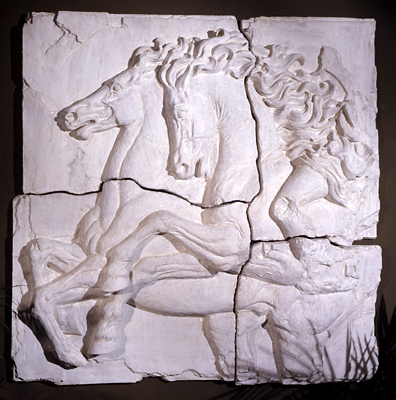
The Fixed Hand
This is cattle country. I’m not making any apologies for it; raising cattle, keeping cattle, on 30, 40, 80, 160 acres of pasture, likely located directly behind the house and farm site, is not an uncommon practice here. As many ranchers are likely to have at least a horse or two around, it’s also not unlikely to find horses in those same pastures. Anyone who has done so can testify….a wide open pasture with a well maintained three strand barbwire fence doesn't pose much risk to a horse.
Until it does.
I must have been 13 or 14 at the time. We were returning home from town, and my younger sister and I were most likely engaged in some kind of battle or another. My mom, however, didn’t notice us. Her attention was fixed on the mare, standing still as a statue at the fence line, head down, appearing to be taking a little nap. “Oh no, Tilly, what have you done?” The worry in her voice ceased our verbal battle immediately. My heart dropped into my stomach when I heard the dread in her voice, and I was afraid to ask. “What’s wrong?” The mare was upright….what was mom’s cause for worry?
I soon discovered what was so ominous about a horse napping at a fence line. She was not there by choice. A loop of barbed wire had become fixed around her leg, restricting her movement. She was not so much napping, as calmly waiting for her human to come and help her out of her fix. What could have been a life threatening disaster was averted, because that mare had the good sense to stand STILL.
Until it does.
I must have been 13 or 14 at the time. We were returning home from town, and my younger sister and I were most likely engaged in some kind of battle or another. My mom, however, didn’t notice us. Her attention was fixed on the mare, standing still as a statue at the fence line, head down, appearing to be taking a little nap. “Oh no, Tilly, what have you done?” The worry in her voice ceased our verbal battle immediately. My heart dropped into my stomach when I heard the dread in her voice, and I was afraid to ask. “What’s wrong?” The mare was upright….what was mom’s cause for worry?
I soon discovered what was so ominous about a horse napping at a fence line. She was not there by choice. A loop of barbed wire had become fixed around her leg, restricting her movement. She was not so much napping, as calmly waiting for her human to come and help her out of her fix. What could have been a life threatening disaster was averted, because that mare had the good sense to stand STILL.
1.13.12 TME
return to
Educated Equestrian
return to
Educated Equestrian

Fast forward 15 years. I was riding with a friend, when we approached a creek crossing. My companion crossed first, and Yogi and I intended to follow, when he stalled. That was unusual. Sure, he was a young horse, three at the time, and young horses can be expected to balk from time to time. But this was really odd…..Yogi had crossed creeks before, they had never concerned him a bit. I gave him a light tap with my heel, but my usually responsive gelding didn’t budge. I was really
scratching my head on this one, so I dismounted to see if I could take a look at him, look at his expression, to see what was going on in that head of his. It didn’t take me long to recognize the problem wasn’t in his head at all. It was on his right hind foot. An old fence line must have been buried there, because just enough of the remains poked through the ground to snare his foot. I picked up his foot (which he gave, with no hesitation), freed it from the loop of barbwire, remounted and continued on our ride with no hesitation, with not so much as a drop of blood spilled.
I have been extremely fortunate (knock on wood) to have had relatively few experiences with horses getting tangled up in fence, wire, or rope. I’ve had a few close calls, and few “Wow, that could have been ugly”, but nothing that had produced life-threatening injury to our horses. Is it really a matter of luck? Or can it be a result of preparation?
There are many famous trainers, producing and selling products of a “breakaway” nature. I’ve seen breakaway halters, lead ropes, and trailer ties. Really, I DO understand how these products can be appealing, tempting to buy. We are all concerned about the safety and comfort of our horses, and often that is how these items are sold. The snap is a weak spot when tying a horse, which provides a safety break-away. This begs the question: who decided a “break-away” trained horse is a safe horse?
"With the fixed hand, it is the horse that yields to himself, rewards himself, and chewing his bit, in this manner suppleness and softness are given to his jaw." Beudant
A riding horse who understands how to respond to a fixed hand, a fixed object (whether they are fixed by choice, tied, or by accident), is one who understands his role in the conversation. These horses are empowered horses. They are active participants in situations, because they have learned to replace their instinctual response, to pull and flee, with a thinking response, to yield. A thinking horse understands he knows “the answer” to a restraint. “Let me see, a tug makes me uncomfortable….um, ok, yield, yes, that feels better. I think I’ll stand here comfortably and wait for my human to release me.” The preparation of a thinking horse allows the horse to understand yielding is one of the tools in HIS toolbox, and he can use it in the jaw, in the hindquarters, in the forequarters…..anywhere he needs to. Teaching a horse about his choices empowers him, and the educated equestrian realizes this is an important component of preparing a horse who can operate in mental and physical self-carriage. A horse who understands his job is to look for “open doors”, places of comfort, takes great joy in the game of looking for and discovering these “open doors”, and in the release that follows.
There are many famous trainers, producing and selling products of a “breakaway” nature. I’ve seen breakaway halters, lead ropes, and trailer ties. Really, I DO understand how these products can be appealing, tempting to buy. We are all concerned about the safety and comfort of our horses, and often that is how these items are sold. The snap is a weak spot when tying a horse, which provides a safety break-away. This begs the question: who decided a “break-away” trained horse is a safe horse?
"With the fixed hand, it is the horse that yields to himself, rewards himself, and chewing his bit, in this manner suppleness and softness are given to his jaw." Beudant
A riding horse who understands how to respond to a fixed hand, a fixed object (whether they are fixed by choice, tied, or by accident), is one who understands his role in the conversation. These horses are empowered horses. They are active participants in situations, because they have learned to replace their instinctual response, to pull and flee, with a thinking response, to yield. A thinking horse understands he knows “the answer” to a restraint. “Let me see, a tug makes me uncomfortable….um, ok, yield, yes, that feels better. I think I’ll stand here comfortably and wait for my human to release me.” The preparation of a thinking horse allows the horse to understand yielding is one of the tools in HIS toolbox, and he can use it in the jaw, in the hindquarters, in the forequarters…..anywhere he needs to. Teaching a horse about his choices empowers him, and the educated equestrian realizes this is an important component of preparing a horse who can operate in mental and physical self-carriage. A horse who understands his job is to look for “open doors”, places of comfort, takes great joy in the game of looking for and discovering these “open doors”, and in the release that follows.